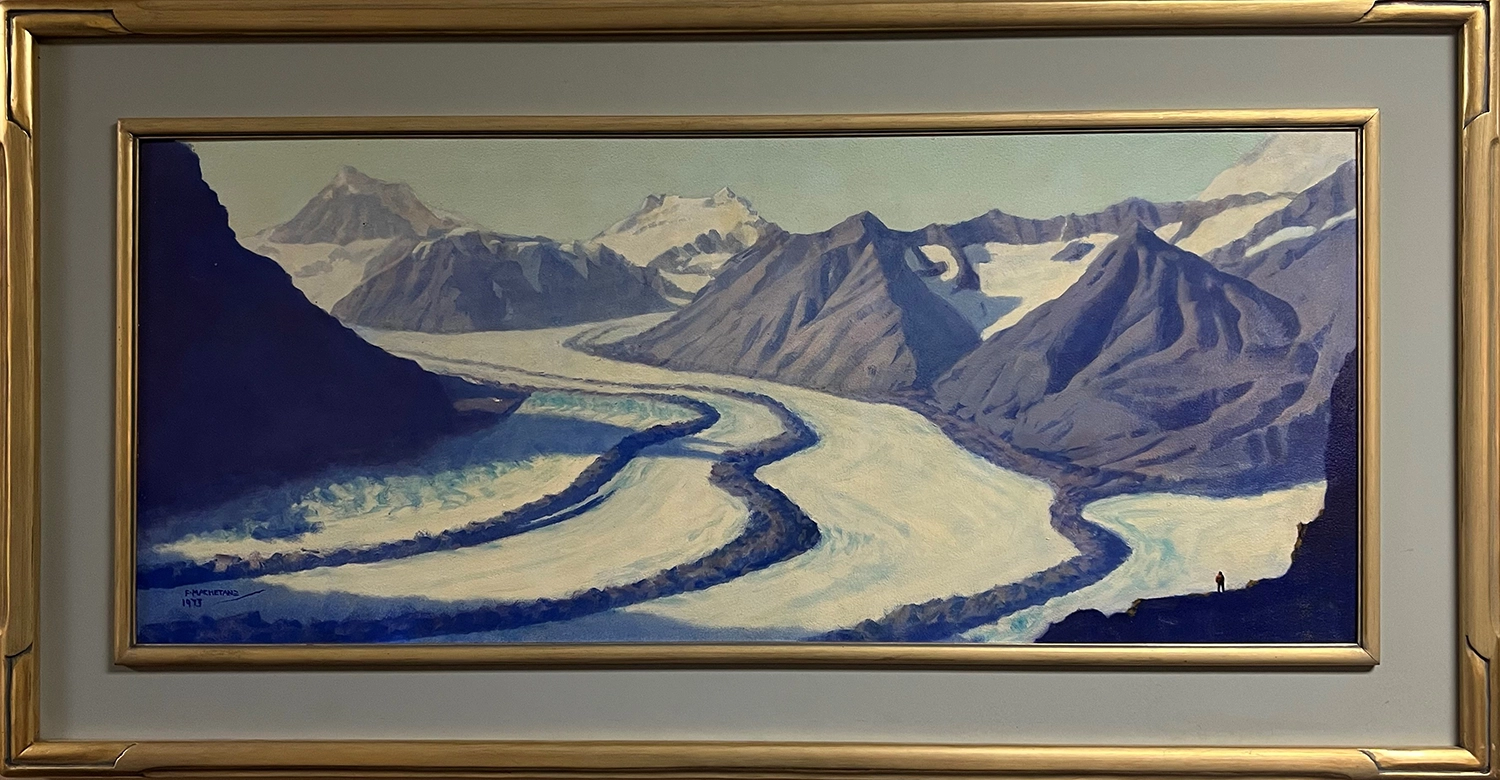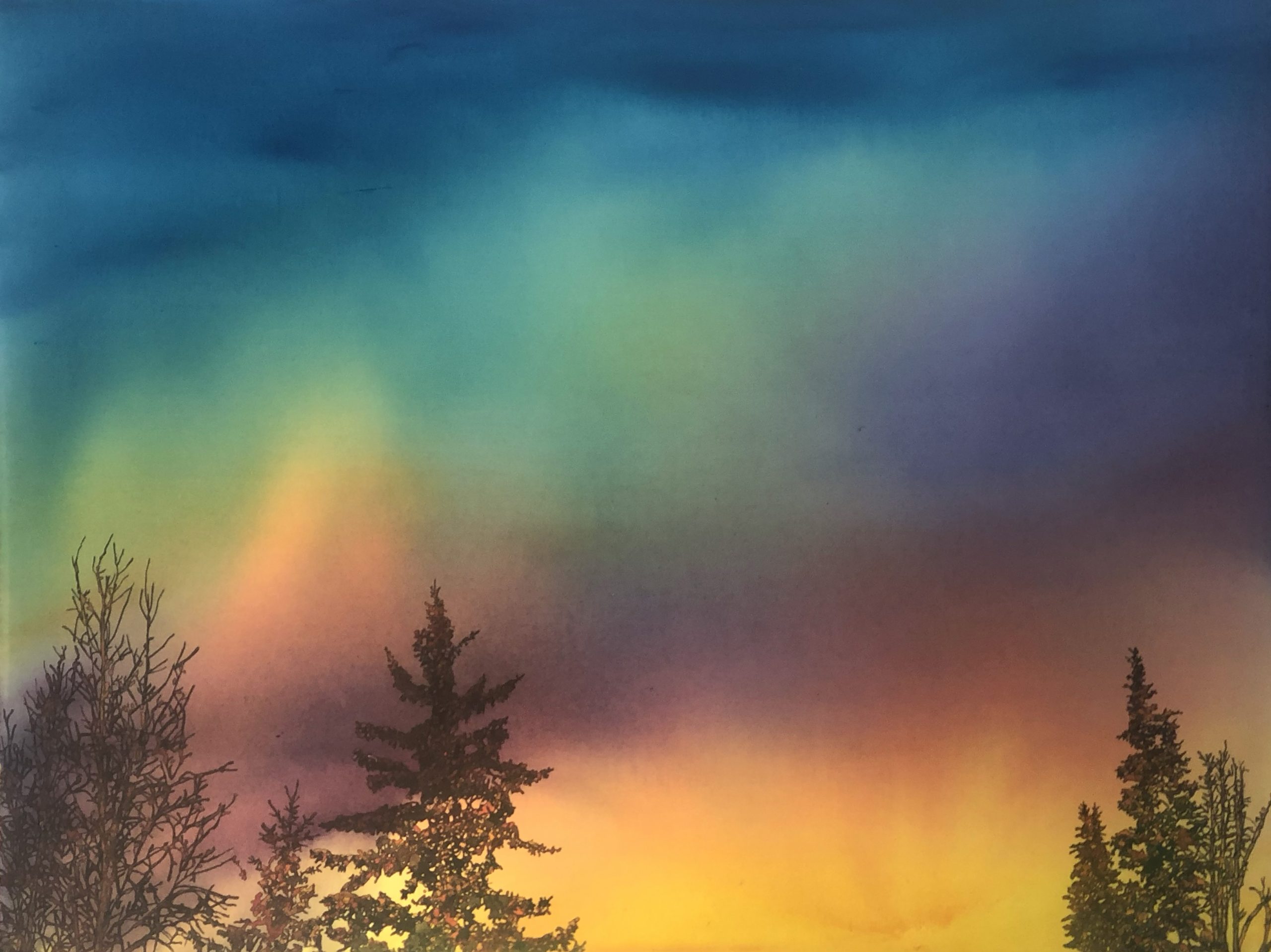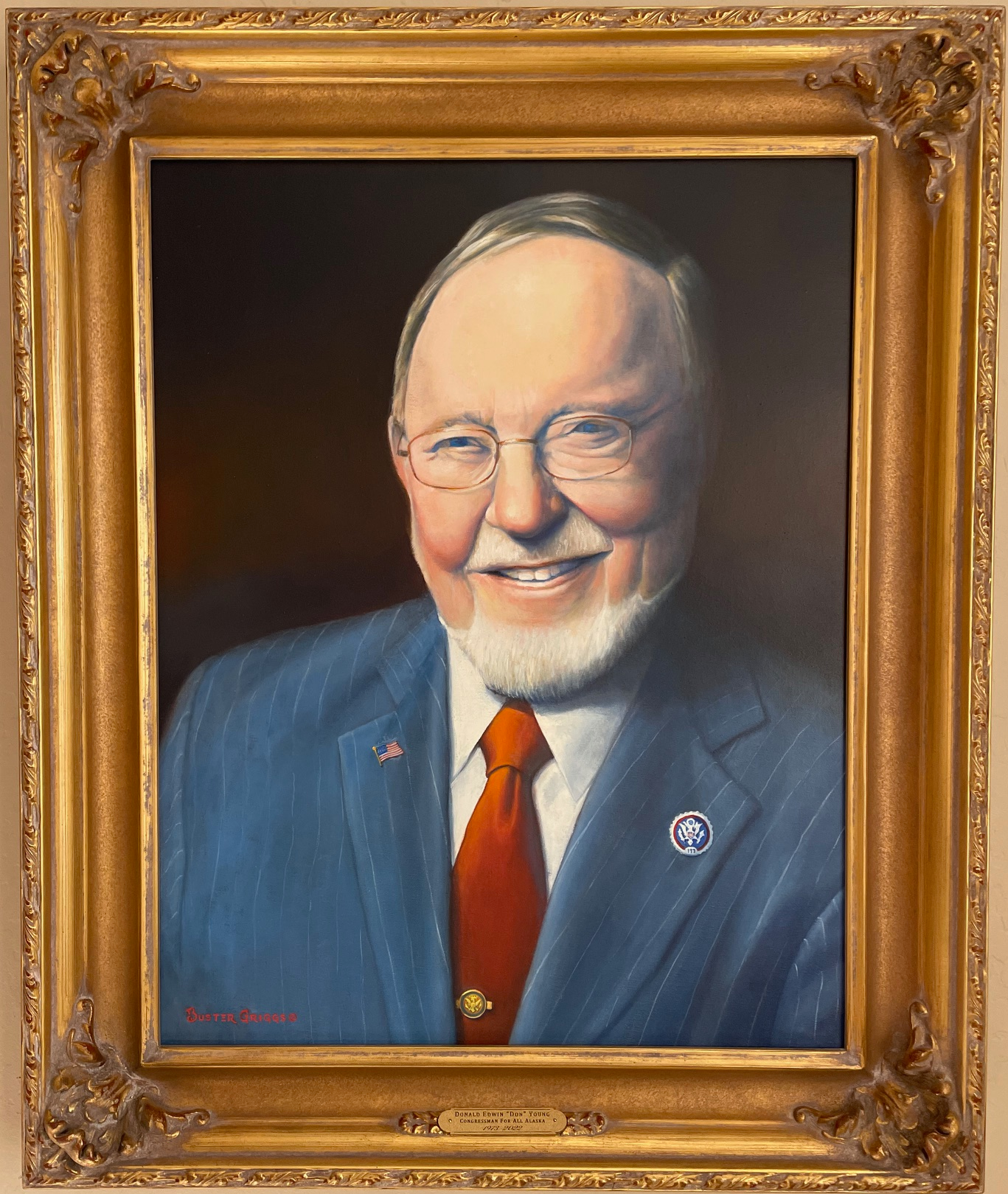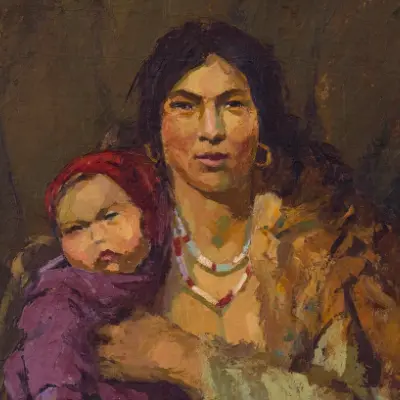The collection of Alaska art that adorns the hallways, legislative chambers, and meeting rooms of the Juneau Capitol is one of the most important collections of Alaska art anywhere — a little-known state treasure. It includes paintings by nearly all of our state’s most famous historical painters and a number of paintings well-known Alaska contemporary artists, as well as relief sculptures, portrait busts, carved panels by one of Alaska’s most celebrated living Alaska Native artists, and much more. This trove of significant art is not only freely accessible to Capitol visitors, but impacts the lives of all those who work in this building.
Art communicates, and it speaks to all who live with and around it. Without words, powerful artwork sneaks into the consciousness of all of us who see it, changing the way we think. The images of Alaska and Alaskans in the Capitol tell us much about where we are, who we are, and what Alaska is about. They do so without inviting disputation the way words so often do, and most of the time without our even recognizing that we have been influenced by them.
The diverse artworks in the Capitol tell different stories about Alaska. Paintings by Sydney Laurence, our most beloved historical artist, tell us that Alaska is a place where the land is majestic, mighty, invulnerable, and where people, when depicted at all, are small and inconsequential. Laurence’s early twentieth century contemporary Eustace Ziegler painted all the same places, but his pioneer Alaskans are large and in the foreground of every one of his paintings, and they tell us that Alaska is a place where those strong enough can survive and prosper. He tells us that we can master, map, and extract rich resources from this place.
Both Native and non-Native Alaskans in Eustace Ziegler’s paintings are strong, even heroic, but they are worn from their labors in this harsh land. Fred Machetanz, the much-beloved Alaska painter who came from Ohio in 1936 for a summer visit with an uncle managing a trading post in Unalakleet, and essentially never left, learned from the Inupiat people who welcomed him and took him into their community that life in Alaska doesn’t have to be a struggle. The visages of the people in his paintings are full of wonder, and his landscapes are filled with warm, heavenly light. Fred Machetanz tells us that for those who work with the land and with one another, Alaska can be a paradise.
As you walk the halls of this Capitol, I would urge you to stop and really look at the artwork—ceramic and bronze busts and painted portraits of eminent Alaskans, relief sculptures that depict Alaskans at work, nineteenth century paintings that chronicle the outset of the tourist industry in the Territory, and so much more. As you look, ask yourself not just what is depicted in those scenes, but what those artworks have to say. This Capitol, a place of key importance to all Alaskans, is filled with treasures, and they are speaking to us.
- Kesler Woodward









